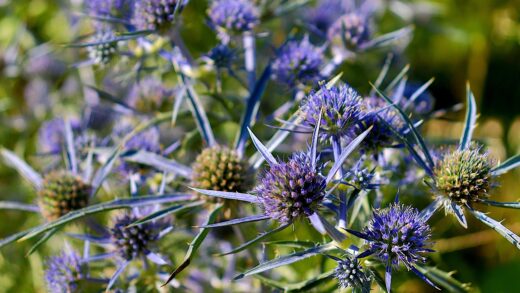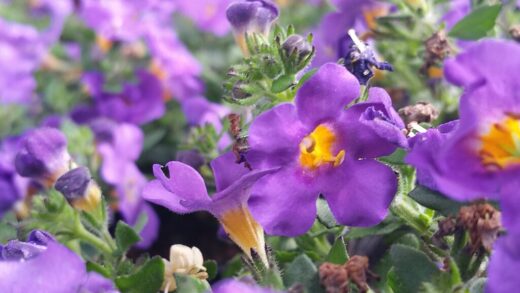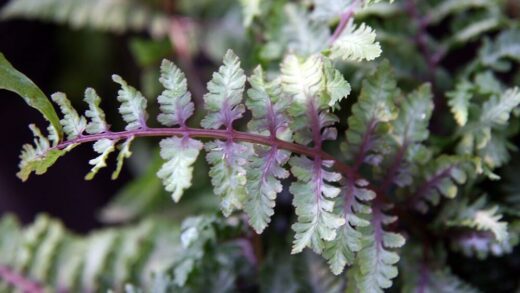Embarking on the journey of planting a passion flower is the first step towards cultivating one of nature’s most architecturally stunning blooms. The success of this initial phase is foundational, setting the stage for the plant’s long-term health and vitality. Proper planting involves more than simply placing the vine in the ground; it requires careful consideration of timing, location, soil preparation, and the specific needs of the Passiflora genus. A well-executed planting provides the robust root system and supportive environment necessary for the vine to thrive and produce its iconic, intricate flowers. This process is a thoughtful investment in the future beauty of your garden, ensuring your passion flower gets the strongest possible start in its new home.
The selection of the ideal planting site is a decision that will have a lasting impact on your passion flower’s performance. These vines are sun-worshippers, demanding a location that receives a minimum of six hours of direct sunlight each day to fuel their growth and flowering. A south or west-facing aspect is typically perfect. Furthermore, it is crucial to provide shelter from strong, prevailing winds, which can easily damage the delicate tendrils and large leaves, causing stress and hindering development. A position against a warm wall or a sturdy fence can offer both the necessary support and protection from the elements.
Soil preparation is another critical component of successful planting. Passion flowers flourish in fertile, well-draining soil that is rich in organic matter. Before planting, it is highly recommended to amend the native soil by incorporating generous amounts of compost, well-rotted manure, or leaf mold. This not only enriches the soil with essential nutrients but also significantly improves its structure, promoting better aeration and preventing waterlogging, a condition that can be fatal to the plant’s root system. The goal is to create a loamy, friable medium that allows the roots to spread easily and access moisture and nutrients efficiently.
The physical act of planting should be undertaken with care to minimize stress on the young plant. The best time to plant is typically in the spring, after the last frost has passed, which gives the vine the entire growing season to establish itself. Dig a hole that is twice as wide and just as deep as the plant’s root ball. Gently remove the plant from its container, being careful not to disturb the roots excessively, and place it in the center of the hole. Ensure that the top of the root ball is level with the surrounding soil surface before backfilling the hole, gently firming the soil around the base of the plant.
Propagation from seed
Propagating passion flowers from seed can be a deeply rewarding, albeit sometimes challenging, endeavor that allows a gardener to witness the entire life cycle of this magnificent plant. Success begins with sourcing fresh, viable seeds, as the germination rate of Passiflora seeds can decline significantly with age. Once you have acquired quality seeds, proper preparation is key to overcoming their often-dormant state. Many species have a hard seed coat that needs to be scarified or softened to allow water to penetrate and initiate the germination process. This can be achieved by gently rubbing the seeds with fine-grit sandpaper or by soaking them in warm water for 24 to 48 hours prior to sowing.
More articles on this topic
The sowing process itself requires a sterile, well-draining seed-starting mix to prevent fungal diseases like damping-off, which can be fatal to young seedlings. Fill small pots or seed trays with the mix and moisten it thoroughly before sowing the seeds about a quarter-inch deep. After sowing, cover the container with a clear plastic dome or bag to maintain high humidity, which is crucial for successful germination. Place the container in a warm location with bright, indirect light. A heat mat can be particularly beneficial, as consistent warmth often speeds up and improves the uniformity of germination.
Patience is a virtue when growing passion flowers from seed. Germination can be erratic and may take anywhere from a few weeks to several months, depending on the species and the conditions provided. It is important to keep the growing medium consistently moist but not waterlogged throughout this period. Once the seedlings have emerged and developed their first set of true leaves, you can begin to gradually acclimate them to lower humidity by removing the plastic cover for increasing periods each day. This hardening-off process is vital to prevent shock.
Once the seedlings are large enough to handle and have a well-developed root system, they can be carefully transplanted into individual pots. Continue to grow them in a bright, protected location until they are robust enough to be planted in their final position in the garden or a larger container. Growing from seed is a longer path to a flowering plant compared to other propagation methods, but it offers the unique satisfaction of nurturing a plant from its very beginning and is an excellent way to cultivate rarer or less common species.
Propagation from cuttings
Propagation from cuttings is a highly effective and popular method for creating new passion flower plants, offering a much faster route to a mature, flowering vine than growing from seed. This technique produces a genetic clone of the parent plant, ensuring that the desirable characteristics, such as flower color and vigor, are faithfully replicated. The ideal time to take cuttings is during the active growing season, typically in late spring or early summer, when the plant has an abundance of healthy, semi-ripe stems. These are stems that are beginning to firm up but are still flexible and not yet fully woody.
More articles on this topic
To take a cutting, select a healthy, non-flowering shoot and, using a clean, sharp knife or secateurs, remove a section that is approximately four to six inches long. The cut should be made just below a leaf node, which is the point on the stem where a leaf emerges. Carefully remove the lower leaves from the cutting, leaving only two or three leaves at the top. This reduction in foliage helps to minimize water loss through transpiration while the cutting is developing its own root system. It is also beneficial to trim the remaining large leaves in half to further conserve moisture.
To encourage root development, you can dip the base of the cutting into a rooting hormone powder or gel, though this is not always strictly necessary for many Passiflora species. Plant the prepared cutting into a pot filled with a well-draining rooting medium, such as a mix of perlite, vermiculite, and peat moss. Insert the cutting about one to two inches deep into the medium, ensuring that at least one leaf node is buried, as this is where roots are most likely to form. Water the medium gently but thoroughly.
Creating a humid environment is crucial for the success of rooting cuttings. You can achieve this by covering the pot with a clear plastic bag or by placing it in a propagator. Position the cuttings in a warm location with bright, indirect light, avoiding direct sun which can scorch the delicate leaves. Keep the rooting medium consistently moist, and you should see signs of new growth within a few weeks, which indicates that roots have successfully formed. Once the cutting has a well-established root system, it can be transplanted to a larger pot and cared for as a young plant.
Layering as a propagation method
Layering is a simple yet highly reliable method of propagating passion flowers, particularly well-suited for vines that have long, flexible stems. This technique encourages a stem to develop roots while it is still attached to the parent plant, which provides it with a continuous supply of water and nutrients, significantly increasing the success rate. The process is best carried out in the spring or summer during the period of active growth. It is an excellent way to produce a small number of new, strong plants with minimal effort and equipment.
To begin the process of layering, select a long, healthy, and vigorous stem that can be easily bent down to touch the soil. Choose a section of the stem that is young and pliable, and identify a leaf node along this section, as this is the most likely point for root initiation. To further encourage rooting, you can make a small, shallow wound on the underside of the stem at this node. This can be done by gently scraping away a small portion of the outer bark with a clean, sharp knife.
Next, prepare a small trench or a pot filled with a quality potting mix directly adjacent to the parent plant. Carefully bend the prepared section of the stem down and bury the wounded node in the soil, ensuring it has good contact with the medium. You may need to use a U-shaped pin, a piece of wire, or a small stone to hold the stem securely in place and prevent it from springing back up. The tip of the stem should be left exposed to the air and light, and it can be gently staked to encourage it to grow upright.
The final step is to keep the soil around the layered section consistently moist. Over the course of several weeks to a few months, the buried node will develop its own independent root system. You can check for rooting by gently tugging on the layered stem; if there is resistance, it is a sign that roots have formed. Once a substantial root system has developed, you can sever the new plant from its parent with a clean cut and carefully transplant it to its desired location.
Post-planting and initial care
The care provided immediately after planting or propagating a new passion flower is critical for its successful establishment and future growth. This initial period is when the plant is most vulnerable as its root system works to anchor itself and adapt to the new environment. The most important task in the first few weeks is to ensure the plant receives consistent and adequate moisture. The soil should be kept evenly moist to prevent the roots from drying out, but it is equally important to avoid overwatering, which can lead to root rot. A deep watering immediately after planting will help to settle the soil around the roots.
During this establishment phase, it is best to avoid applying any strong fertilizers. The young, developing roots are sensitive and can be easily burned by an excess of nutrients. The organic matter that you incorporated into the soil during preparation should provide sufficient nutrition for the first month or two. Once you observe clear signs of new growth, such as the unfurling of new leaves or the extension of new shoots, you can begin a regular feeding schedule with a balanced, diluted liquid fertilizer to support its continued development.
Providing physical support from the very beginning is also a crucial aspect of post-planting care. As soon as your new passion flower is in the ground, gently guide its young tendrils and stems towards the trellis, fence, or other structure you have provided for it to climb. You may need to loosely tie the main stems to the support using soft plant ties to encourage it to grow in the right direction. This early training establishes a strong framework for the vine and prevents it from becoming a tangled mass on the ground.
Finally, be vigilant in monitoring your new plant for any signs of stress, such as yellowing leaves, wilting, or evidence of pests. Early detection and intervention can prevent minor issues from becoming major problems. Protect the young plant from extreme weather conditions, such as late frosts or scorching sun, until it has had time to acclimate to its new surroundings. With this attentive initial care, your passion flower will be well on its way to becoming a vigorous and stunning addition to your garden.


















